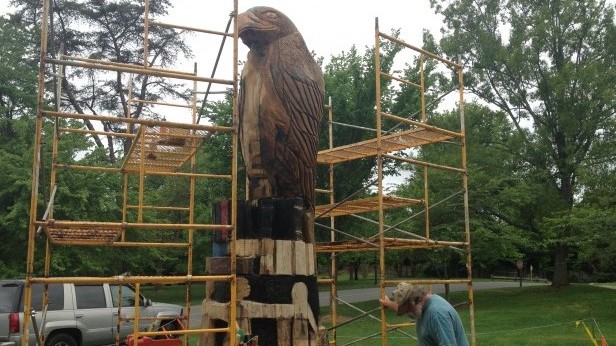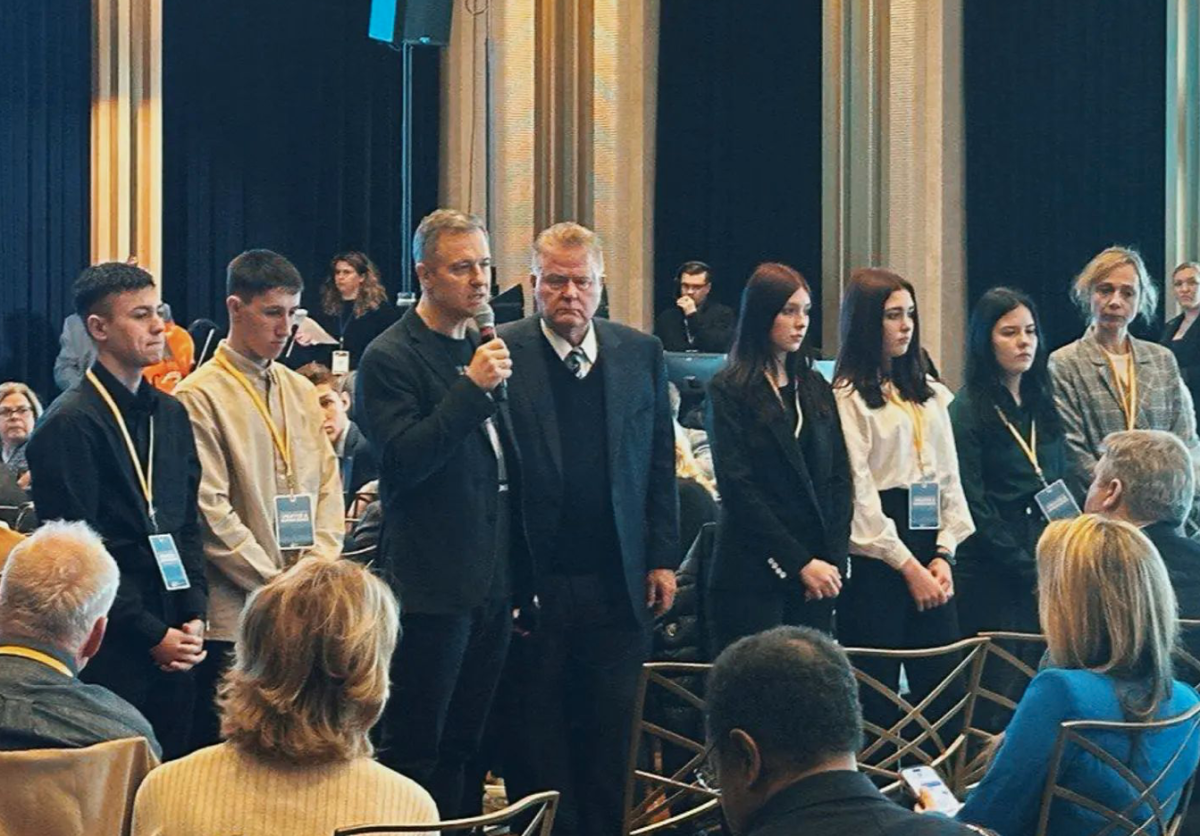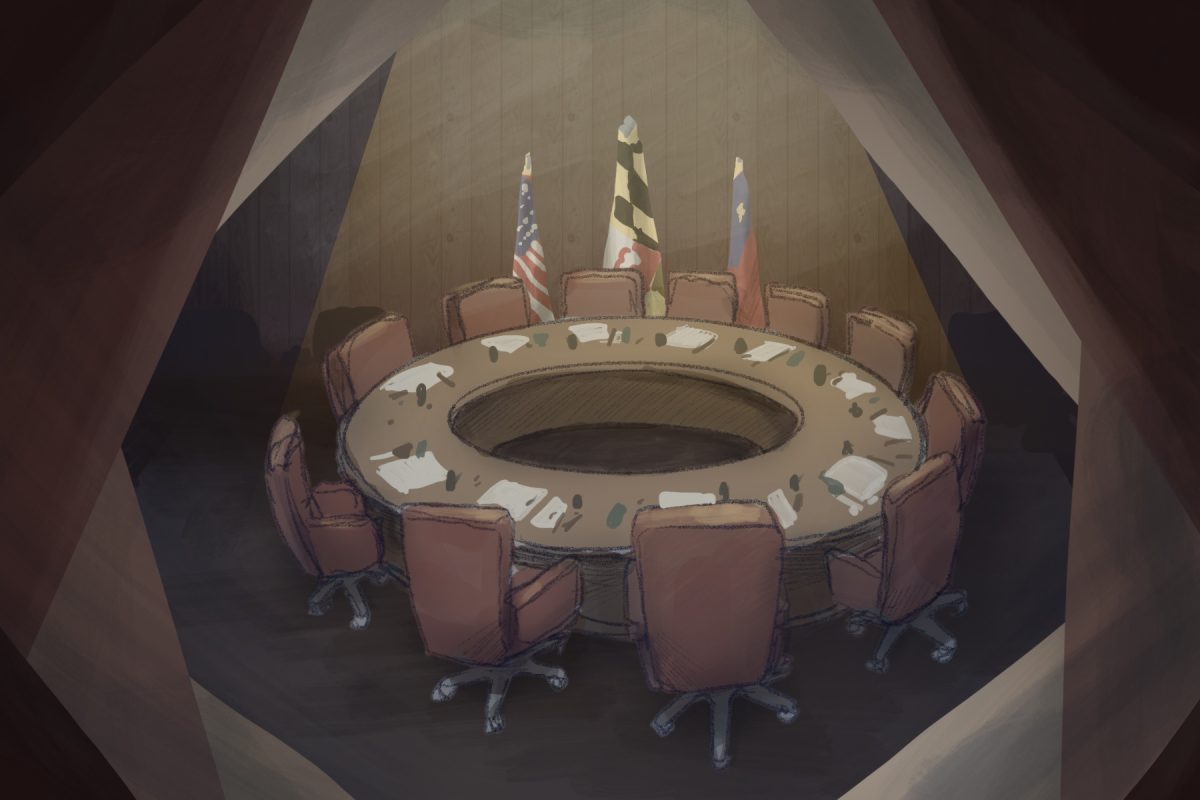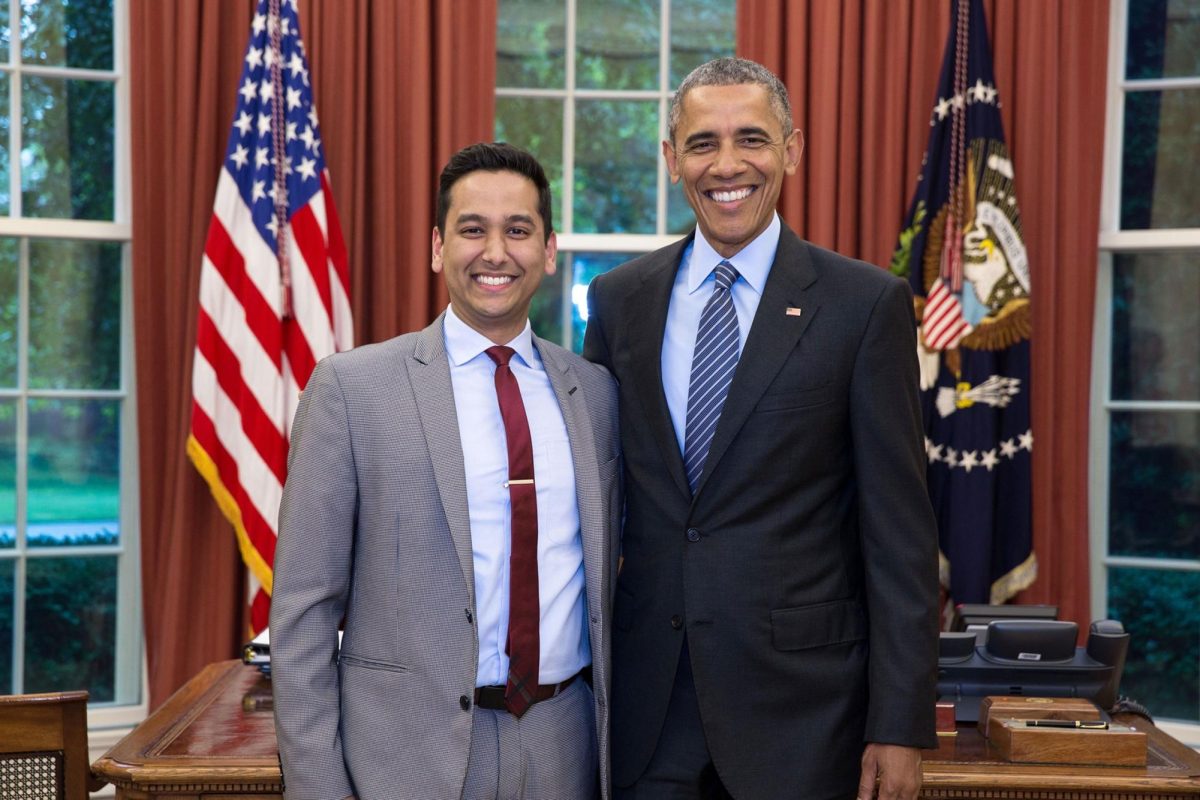A lightning-struck tree recently sculpted at the Norwood School may have lost its bark, but it now has a beak.

Almost immediately after the tree fell, the school began to search for an artist to carve the tree into their school mascot, the blue hawk. Jim Calder Jr., who was chosen out of many candidates, began chiseling the tree from April 16 and finished May 9.
Calder’s experience and expertise stood out after an internet search gave the school many artists to choose from, said Leanne Gill, director of communications at the Norwood school.
“The quality of Jim Calder’s work as shown on his website instantly caught our attention,” she said.
Calder, a Baltimore County resident, has won blue ribbons at the local, state and international levels as a woodcarver. He used the carving opportunity at Norwood to teach the students about woodcarving. The students brought blocks of clay and he taught them to carve faces, he explained.
“When you’re teaching someone and they actually watch you do it, the whole thing comes to realization very fast,” Calder said. “Every time I do a large commission I teach children how to carve.”
Gill said that the Norwood community enjoyed Calder’s presence on the campus, and that his love of woodcarving translates into a love of teaching.
“Our art teachers brought their classes out to the tree so they could observe Mr. Calder in action,” she said. “He could be on the top of the scaffolding with a chainsaw in hand, particles of wood swirling all around him, and he would always stop what he was doing, climb down the scaffolding and spend time with many students, teachers and parents who stopped by to watch him work.”
Calder’s artistic passion and talent runs in the family—he is distantly related to famous artist Alexander Calder, part of the reason Gill chose him. Because he prefers to be known for his own talent rather than his relative’s, Calder previously used a false name in competitions.
“I actually won some of the top competitions in the world not using my last name,” he said. “I used the name ‘Kadan’ because I was so tired of everybody saying, ‘oh you’re just trying to live off the name,’ and I wasn’t. I figured I had made my mark; why should I be ashamed to use my name?”
Norbert Munson taught him to carve when Calder was seven. He watched professional carvers work in Munson’s furniture shop and copied their work over several years until he was able to duplicate it, and then demonstrated his abilities to Munson, who let him carve all his furniture from that point on.
Munson had a sign in his shop that said, “Sandpaper is for fools who can’t sharpen their tools”. Munson taught that if he made the most of the tools he used and spent enough time on a carving, he would not need power tools, Calder said.
Munson inspired Calder to pursue woodcarving but also encouraged him to teach others, Calder said.
“He said to me, ‘Whatever you do in life, whether you make furniture or whether you carve, I want you to give it away just like I gave it to you.’” Calder said. “So for thirty years I’ve been teaching young kids to carve.”











